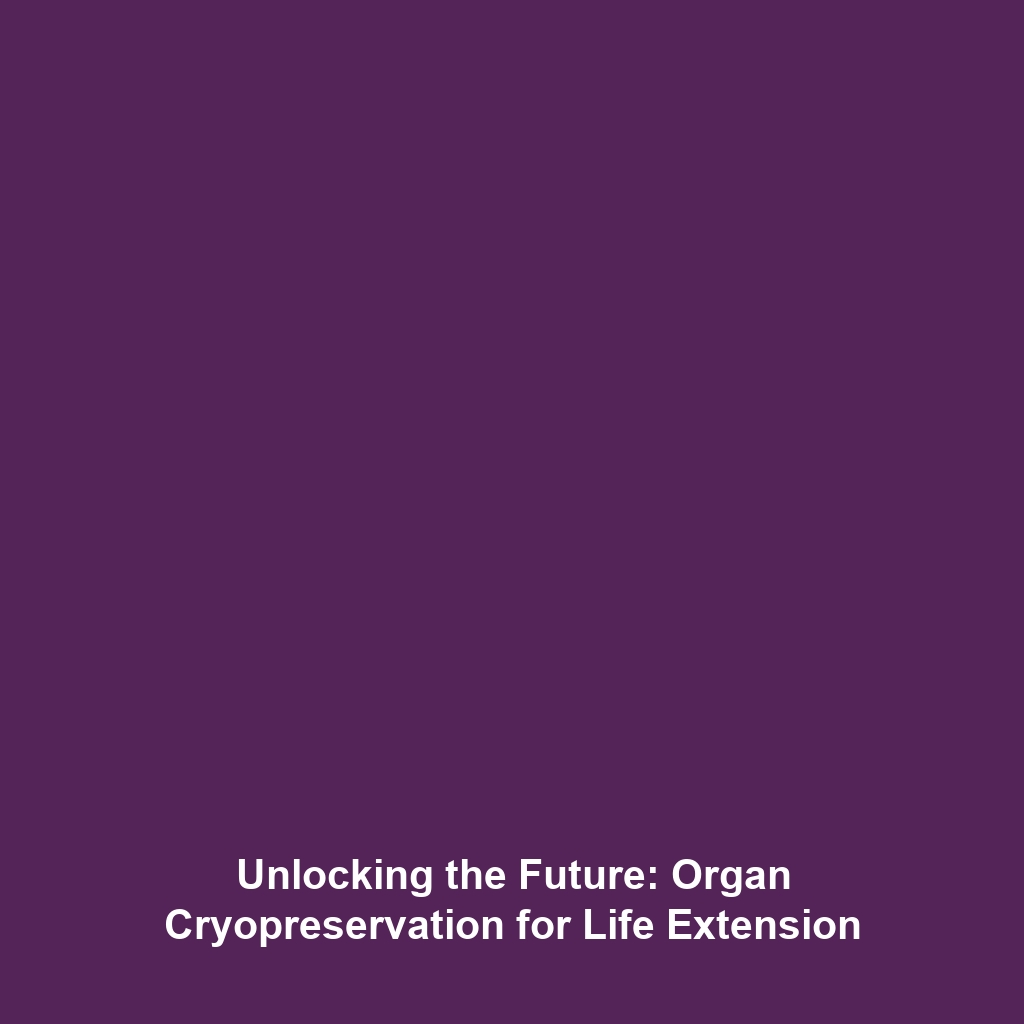Understanding Cryonics: The Procedure of Cryoprotection
Introduction
The procedure associated with cryonics—specifically, the process initiated upon legal death where the body is cooled and blood circulation is replaced with a cryoprotectant—holds immense significance in the quest for life extension. This innovative method aims to preserve the body at extremely low temperatures, preventing ice crystal formation in tissues and offering hope for future revival. As the field of cryonics continues to evolve, understanding this pivotal procedure is essential for grasping its broader implications for life extension.
Key Concepts
Several fundamental concepts are crucial for understanding the procedure of replacing blood with cryoprotectant. These include:
Cooling Techniques
Upon legal death, the body undergoes gradual cooling, transitioning from standard body temperature to sub-zero conditions. This cooling process is critical for reducing metabolic activity and preserving cellular structures.
Cryoprotectants
Cryoprotectants are substances that protect biological tissue from damage due to freezing. They work by reducing ice crystal formation within cells, which can cause cellular rupture and irreversible damage.
Application in Cryonics
This procedure is integral to cryonics, allowing the preservation of the body in hopes of future revival through advancements in medical technology and techniques.
Applications and Real-World Uses
The practical applications of this cryonics procedure significantly influence the field of life extension. Key examples include:
- Preservation for Future Revival: The primary application is the long-term preservation of individuals deemed legally dead with the hope of advanced medical technology enabling revival.
- Research Foundations: Cryonics procedures also contribute to scientific research by providing insights into cellular preservation and repair mechanisms.
Current Challenges
Despite its potential, the procedure faces several challenges, including:
- Ice Crystal Formation: While cryoprotectants reduce this risk, complete prevention remains a challenge.
- Legal and Ethical Considerations: The definition of death and the ethical implications of cryonics create ongoing legal debates.
- Technical Limitations: Current technologies may not fully support the revival process, and research in this area is still in its infancy.
Future Research and Innovations
Exciting innovations are on the horizon that may enhance the effectiveness of the cryonics procedure:
- Advanced Cryoprotectants: Ongoing research aims to develop new formulations of cryoprotectants that minimize cellular damage.
- Nanotechnology: Future applications of nanotechnology may enable cellular repair post-revival, further improving success rates.
- Artificial Intelligence: AI may play a role in optimizing the cooling and thawing processes for better preservation outcomes.
Conclusion
In summary, the procedure that involves cooling the body upon legal death and replacing blood circulation with a cryoprotectant is a critical component of cryonics, significantly impacting the field of life extension. As research continues to advance, the potential for future applications remains vast. For those interested in more about the compelling intersections of technology and life preservation, we invite you to explore our additional resources on cryonics research and ethical issues in life extension.
This formatted article provides a structured, SEO-optimized look at the relevant cryonics procedure. The content is organized to facilitate readability and includes keywords pertinent to the topic and field.







